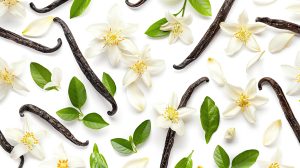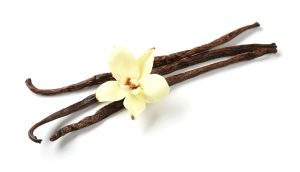Indonesian Vanilla Beans – Vanilla is one of the world’s most treasured spices—but behind every fragrant bean lies a fascinating journey of patience, precision, and craftsmanship. Unlike many other agricultural commodities, vanilla is not mass-produced by machines. Instead, it is hand-pollinated, hand-harvested, and carefully cured over several months. In Indonesia, this process is deeply rooted in tradition, passed down through generations of skilled farmers.
Let’s explore how Indonesian vanilla makes its way from orchid flowers to export-ready beans.
Step 1: Cultivating the Orchid
Vanilla comes from Vanilla planifolia and Vanilla tahitensis, both species of climbing orchids. The vines grow on tall support trees or wooden poles in humid tropical environments. Farmers gently guide the vines as they climb, pruning them to increase flowering potential.
Unlike most commercial crops, vanilla flowers bloom only once a year, and each flower opens for just a single day. If not pollinated within 12 hours, the flower wilts—and no bean will form.
Step 2: Hand Pollination — A Race Against Time
In Madagascar and Indonesia, vanilla has no natural pollinators, so humans must step in. Farmers, often women and elderly workers, use a small bamboo stick or thorn to delicately lift the flower’s membrane and press the male and female parts together. This technique, known as “the marriage of the flower,” must be done with extreme care.
A single pollinator can handle hundreds of flowers each morning, ensuring that as many beans as possible will grow in the months ahead.
Step 3: Harvesting the Green Pods
After 7 to 9 months, the green vanilla pods are ready to harvest. Timing is critical. If picked too early, the flavor will be weak; if picked too late, the pods may split open and lose valuable vanillin content.
Farmers harvest each pod by hand, selecting only those with the perfect maturity level.
Step 4: The Art of Curing — Where Flavor is Born
This stage is what truly separates premium vanilla from low-grade beans. The curing process unfolds in several phases:
-
Killing or Wilting: Beans are dipped in hot water or heated in blankets to stop biological activity.
-
Sweating: The beans are wrapped in cloth and stored in wooden boxes, allowing natural enzymes to develop rich aromas.
-
Drying: Beans are laid under the sun during the day and kept warm at night to slowly reduce moisture while preserving oils.
-
Conditioning: Finally, the beans are stored in wooden containers for 1 to 3 months, allowing flavors to mature like fine wine.
The entire curing process can take up to six months, and every exporter has their own signature technique—some seeking smoky, deep notes, while others prefer floral or fruity profiles.
Step 5: Grading and Quality Control
Once cured, beans are classified by:
-
Length (usually 12–20 cm)
-
Moisture level (20–35% depending on request)
-
Appearance (oily, flexible, and free from splits)
Grades such as Grade A (Gourmet), Grade B (Extract), and Cuts are determined based on moisture and visual quality. Each buyer—whether for ice cream, beverages, or cosmetics—may request different specifications.
Step 6: Packaging for Export
To maintain freshness, vanilla beans are usually vacuum-packed or sealed in food-grade plastic, then stored in cool, shaded environments. Exporters add traceability labels, laboratory reports, and phytosanitary certificates to meet international standards.
Many professional exporters now offer custom packing, private labeling, and bulk cartons for wholesalers and manufacturers.
The Final Destination
From artisan bakeries in France to perfume houses in Japan and gelato makers in Italy, Indonesian vanilla beans travel across the world. Each pod carries a story—a farmer’s care, months of dedication, and the unmistakable aroma that only true vanilla can provide.
If you’re looking for export-grade cured vanilla beans—sustainably sourced, moisture-controlled, and ready for bulk shipment—we are here to supply your business needs. Contact us for current stock and pricing.



